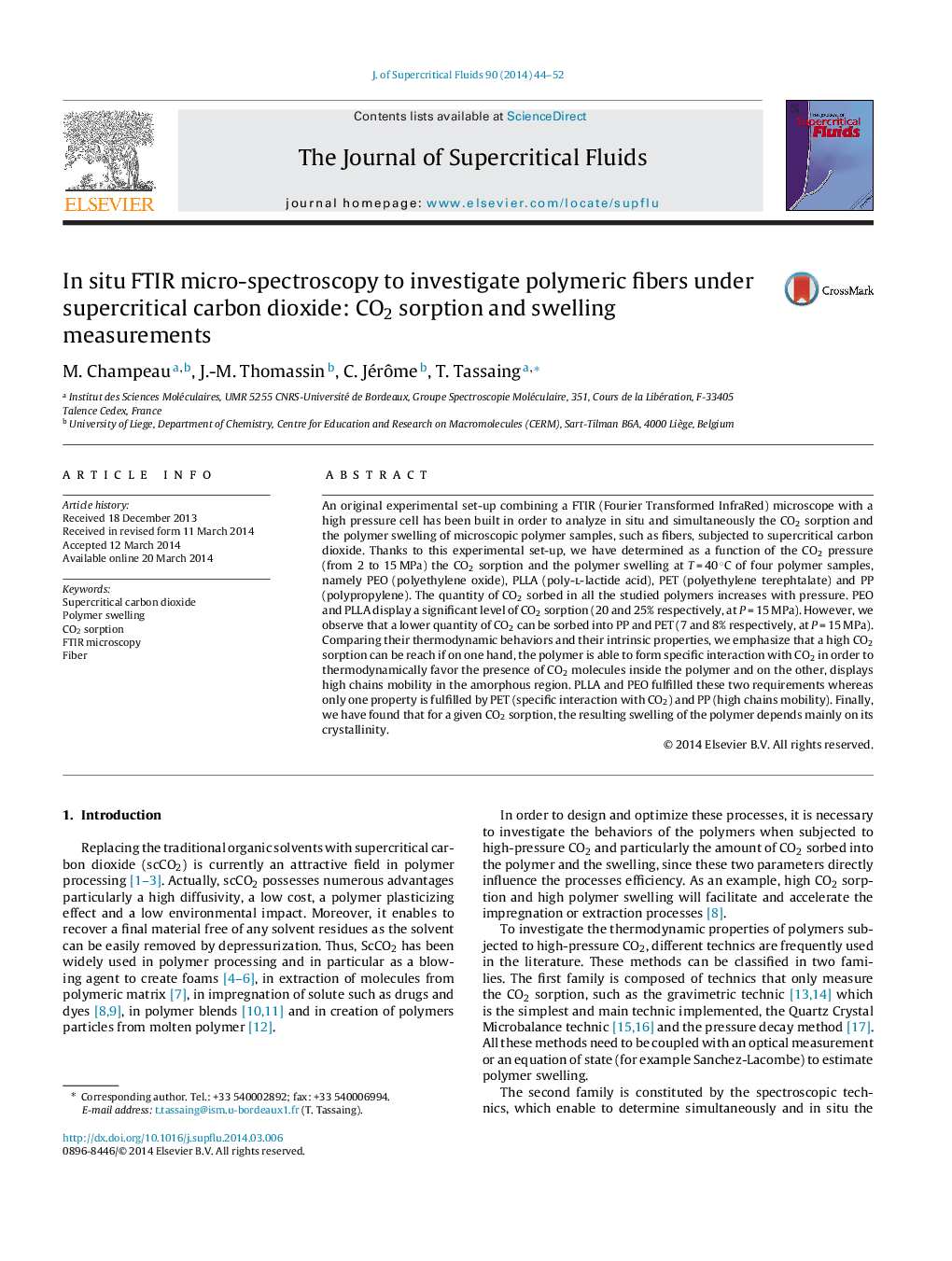| Article ID | Journal | Published Year | Pages | File Type |
|---|---|---|---|---|
| 230508 | The Journal of Supercritical Fluids | 2014 | 9 Pages |
•A new set-up combining a FTIR microscope with a high pressure cell has been built.•Investigation of CO2 sorption and swelling of polymeric fibers at T = 40 °C up to P = 15 MPa.•PEO and PLLA display a significant level of CO2 sorption about 25% at P = 15 MPa.•A lower quantity of CO2 can be sorbed into PP and PET (about 7% at P = 15 MPa).•The resulting swelling of the polymer depends mainly on its crystallinity.
An original experimental set-up combining a FTIR (Fourier Transformed InfraRed) microscope with a high pressure cell has been built in order to analyze in situ and simultaneously the CO2 sorption and the polymer swelling of microscopic polymer samples, such as fibers, subjected to supercritical carbon dioxide. Thanks to this experimental set-up, we have determined as a function of the CO2 pressure (from 2 to 15 MPa) the CO2 sorption and the polymer swelling at T = 40 °C of four polymer samples, namely PEO (polyethylene oxide), PLLA (poly-l-lactide acid), PET (polyethylene terephtalate) and PP (polypropylene). The quantity of CO2 sorbed in all the studied polymers increases with pressure. PEO and PLLA display a significant level of CO2 sorption (20 and 25% respectively, at P = 15 MPa). However, we observe that a lower quantity of CO2 can be sorbed into PP and PET (7 and 8% respectively, at P = 15 MPa). Comparing their thermodynamic behaviors and their intrinsic properties, we emphasize that a high CO2 sorption can be reach if on one hand, the polymer is able to form specific interaction with CO2 in order to thermodynamically favor the presence of CO2 molecules inside the polymer and on the other, displays high chains mobility in the amorphous region. PLLA and PEO fulfilled these two requirements whereas only one property is fulfilled by PET (specific interaction with CO2) and PP (high chains mobility). Finally, we have found that for a given CO2 sorption, the resulting swelling of the polymer depends mainly on its crystallinity.
Graphical abstractFigure optionsDownload full-size imageDownload as PowerPoint slide
